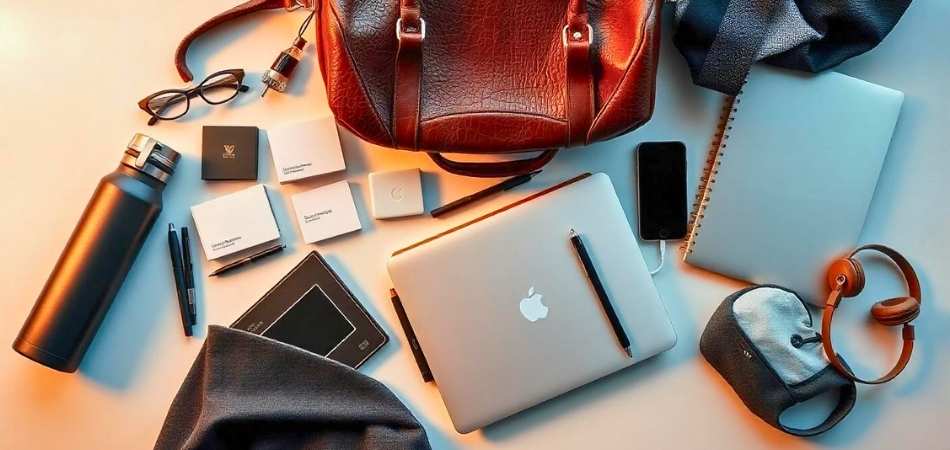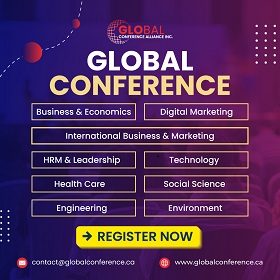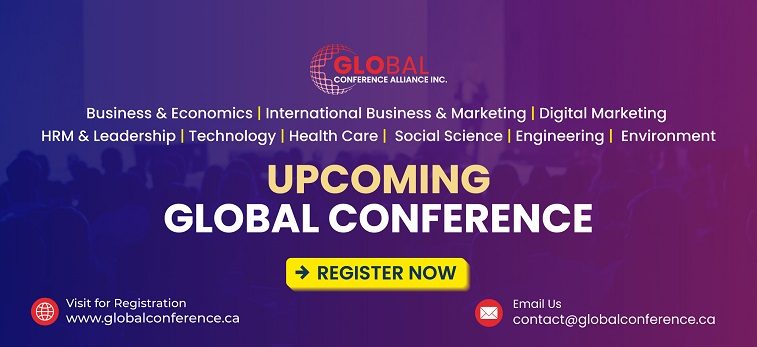An applied science conference connects various experts and enthusiasts, highlighting emerging ideas and practical discoveries. You might already imagine the lively exchanges and networking, but there’s a pressing question on your mind: What to bring to an applied science conference?
For an applied science conference, bring registration documents, a notebook, a laptop, and business cards for networking. Pack comfortable attire, presentation materials, a water bottle, and snacks. Also, carry headphones, travel details, and backups of digital files for a smooth experience.
Are you curious to explore each of these items in more depth, seeing how they improve your conference experience? Read on and discover everything you need to know in this article, ensuring you’re prepared for an unforgettable applied science event.
What to Bring to an Applied Science Conference?
Participating in a science conference is an exciting opportunity to learn, network, and share ideas. Whether you are presenting or attending, being well-prepared ensures a smooth experience. Here’s a list of everything you should bring to stay organized and make the most of the event.
Conference Registration Details
Make sure to carry all your registration documents, such as a printed or digital pass, ID, and payment receipt. Most conferences require attendees to show their credentials at check-in, and having your registration materials ready will save you time. Double-check any additional requirements like conference badges or QR codes to avoid delays when entering the event venue.
Notebook and Pen
While digital tools are convenient, having a notebook and pen is still valuable for capturing quick notes or writing down key ideas during sessions. Sometimes, writing things down by hand helps retain information better than typing. You can also use your notebook for making sketches or writing questions you want to follow up on later.
Laptop or Tablet
A laptop or tablet is essential for taking detailed notes or viewing digital conference materials. If you are considering attending international events like an applied sciences conference in Canada, these devices can help you stay connected with event apps, view session slides, and explore networking opportunities. Having a portable device also ensures you can follow along with interactive presentations and activities.
Business Cards
Networking is an essential aspect of any conference. Business cards are an easy way to exchange contact information with fellow attendees or speakers. Be sure your card has relevant details like your name, email address, and field of interest. Alternatively, a digital business card or a QR code linked to your professional profile can be a modern alternative.
Comfortable Attire
You should dress comfortably but professionally for a conference. Most events involve long hours of sitting and walking between sessions. You want to wear clothes that allow movement and keep you comfortable throughout the day. Layers are also recommended, as temperature variations in different rooms can affect your comfort level during the event.
Presentation Materials
Make sure all of your materials are available and ready if you plan to present at the conference. Save your presentation slides on a USB drive and upload them to cloud storage for a backup. It’s wise to check whether the conference provides specific equipment or software to ensure that your presentation will run smoothly, avoiding last-minute technical issues.
Water Bottle and Snacks
Conferences can have long sessions with short breaks in between, so stay hydrated and energized. Carry a reusable water bottle to ensure you have access to water throughout the day. A few small snacks, like granola bars or fruit, can help maintain your energy levels during extended sessions or when waiting between events.
Headphones or Earplugs
During a conference, some areas can be noisy, especially in networking zones or crowded halls. Carrying a pair of noise-canceling headphones or earplugs can help you focus or take a break when you need it. These can also be helpful if you’re preparing for your presentation and need a quiet place to concentrate.
Travel and Accommodation Details
If you’re traveling to the conference from another city, be sure to keep all your travel and accommodation details easily accessible. Having a printed or digital itinerary with flight or train tickets, hotel reservations and transportation information can save you time. Familiarize yourself with the venue’s location and nearby facilities to make your experience more convenient and stress-free.
With these items packed, you will be prepared to have a productive and enjoyable experience at any conference. Staying organized ensures you can focus on what matters: learning, networking, and gaining valuable insights that you can apply in your field.
Why Should You Carry Printed and Digital Conference Registration Documents?
When attending a conference, being prepared with your registration documents is crucial. Both digital and printed copies serve as proof of your registration and help avoid confusion. To ensure smooth entry and participation, read on to find out why carrying these documents is essential.
Easy Access for Event Organizers
Having both printed and digital registration documents readily available helps event organizers quickly verify your attendance. Whether you’re at the check-in desk or entering specific sessions, having the required documents on hand allows for a smooth and hassle-free experience, helping everyone stay on schedule.
Backup in Case of Technical Issues
While digital documents are convenient, technical issues like device failures or weak Wi-Fi signals can interfere with accessing them. By carrying printed copies, you have a reliable backup in case your phone or laptop malfunctions, ensuring you’re never caught off guard or delayed during the event.
Simplified Event Participation
Conferences often have strict entry protocols. Carrying both digital and printed registration documents ensures smooth participation across different event areas. Whether you’re entering a session, exhibition, or networking space, showing your registration documents helps organizers easily identify you, speeding up your entry and preventing delays in the process.
Easier Verification at Multiple Venues
It is common for conferences that take place in several locations to require you to present proof of registration at each one. Having both printed and digital copies makes it easy to access the necessary documents at any time, allowing you to move smoothly between sessions and venues without worrying about missing an important detail.
Reduced Risk of Missing Important Details
Digital documents often contain links, reminders, or other important information that may not be included in the printed version. By carrying both formats, you ensure that you’re always up to date with any event changes, helping you stay informed and avoid missing key updates or schedule alterations during the conference.
Carrying both printed and digital registration documents provides peace of mind, ensuring that you’re always prepared for whatever the conference day brings. Having both copies on hand allows you to stay organized and avoid unnecessary stress.
What Type of Notebook is Best for an Applied Science Conference?
Attending an applied science conference requires a notebook that allows for both organization and taking notes. The right notebook helps you record key information effectively while keeping your thoughts structured. Here are a few important details about the best notebook options for such an event:
Durable and Good Quality Paper
When selecting a notebook, prioritize one with thick, good-quality paper that can handle heavy writing, pens, or highlighters without bleeding through. Durable paper ensures your notes remain legible and neat. This is especially important in a conference setting where you’ll need to refer back to your notes frequently and expect your notebook to withstand daily use.
Portability and Size
The perfect notebook for a conference should be compact enough to fit easily into your bag, but spacious enough to take detailed notes. A medium-sized notebook offers a balance of portability and adequate writing space. This ensures you’re able to take it everywhere with ease, whether you’re moving between sessions or simply taking a break.
Easy Organization
A notebook with built-in organization tools, like numbered pages or pre-printed sections, is ideal for conferences. These features allow you to quickly refer to specific topics, such as lecture notes or research ideas, without wasting time flipping through pages. Structured notebooks help you keep information organized, making it easier to review your notes later.
Binding Type and Flexibility
Go for a notebook with a flexible binding, such as spiral or stitch-bound, so that it lays flat when open. This helps when writing during long sessions, as you can fold the notebook back easily. A flexible binding also provides added comfort and convenience for taking notes quickly and efficiently throughout the conference.
Water-Resistant or Sturdy Cover
Since conferences can be busy, select a notebook with a sturdy or water-resistant cover. This protects your notes from spills or damage caused by accidental drops. A solid cover ensures your notebook remains in good condition throughout the event, protecting the integrity of your notes, even in unpredictable environments.
Choosing the right notebook for an applied science conference ensures you stay organized and focused. A durable, portable notebook with good binding and protection allows you to take clear, structured notes that you can depend on during and after the event.
How Should a Professional Business Card for Applied Science Conferences Look?
When attending an applied science conference, your business card is often your first impression. A well-designed card reflects your professionalism and helps you stand out among a crowd of experts. Keep reading to learn how to design the perfect business card for these events.
Clear and Professional Layout
Your business card should have a clean design with minimal clutter. Focus on key information like your name, title, and contact details. This ensures that people can quickly understand who you are and how to reach you. A simple, professional layout will give a lasting positive impression at any conference.
Use of Relevant Colors
When selecting colors, choose shades that convey professionalism while aligning with your field. For an applied science conference, use neutral tones like blue or gray to evoke trust and expertise. If applicable, incorporate your company or personal branding colors to make your card stand out without overwhelming the design.
Include Important Contact Information
Make sure your business card includes all necessary contact details, such as your phone number, email address, and relevant social media profiles. This will make it easy for others to follow up with you after the event. Ensure the text is clear and easy to read so that contact information is always accessible.
Good Quality Material and Finish
The material and finish of your business card impact its overall feel. Choose a sturdy cardstock with a professional finish, such as matte or glossy. A good quality finish adds a touch of sophistication and ensures your card maintains its appearance after being handled multiple times during the conference.
Add Your Professional Logo
Including your personal or company logo is an effective way to make your business card memorable. Position the logo prominently, but not too large, to maintain a balanced look. A well-designed logo will reinforce your brand and make your card more recognizable to those you meet at the conference.
A professional business card is an essential tool for making a strong first impression at an applied science conference. By focusing on clean design, clear information, and quality materials, your card will leave a lasting impact and help you build meaningful connections.
Maximizing Comfort for Long Conferences: Key Tips for Staying Focused
Staying attentive and involved for prolonged periods is necessary when attending a lengthy conference. Comfort plays a key role in ensuring that you remain attentive and make the most of the event. Below, you’ll find important factors that influence comfort and the overall conference experience.
Choosing the Right Seating
Sitting for long hours can be tiring if your seat lacks proper support. If possible, choose a chair with good back support to prevent discomfort. Adjusting your posture and shifting positions occasionally can reduce strain. If seating options are limited, bringing a small cushion or lumbar support can make long sessions more comfortable.
Wearing Comfortable Attire
What you wear affects how you feel throughout the event. Many attendees prefer formal yet comfortable outfits. It’s always a good idea to select appropriate clothing for an applied science conference to ensure ease of movement while maintaining a professional look. Soft fabrics and well-fitted shoes add to overall comfort.
Staying Hydrated and Energized
Long conferences can be exhausting, especially if you’re not staying hydrated. Keeping a water bottle with you prevents fatigue and improves focus. Eating light, nutritious snacks like nuts or fruits helps maintain energy levels. Avoid excessive caffeine, as it can lead to dehydration and make it harder to stay alert during extended discussions.
Managing Temperature and Environment
Conference venues can be surprising when it comes to temperature. Some rooms may be too cold due to air conditioning, while others may feel too warm. Wearing layered clothing allows you to adjust as needed. Carrying a lightweight jacket or sweater ensures that sudden temperature changes don’t affect your concentration and overall comfort.
Taking Breaks When Possible
Sitting in one place for too long can lead to physical fatigue and reduced concentration. Taking short breaks to stretch or walk around improves circulation and keeps you feeling refreshed. Even a brief step outside or a few minutes of deep breathing can help clear your mind and improve engagement for the next session.
Comfort plays a major role in how well you experience a long conference. By considering seating, clothing, hydration, and breaks, you can stay comfortable and focused throughout the event. Small adjustments can make a big difference in your overall engagement.
Is It Necessary to Download a Schedule Before an Applied Science Conference?
To get the most out of an applied science conference, time management skills are essential. A well-planned schedule helps avoid confusion and ensures you don’t miss key sessions. Below are important reasons why downloading a schedule can be beneficial.
- Better Time Management: Having the schedule in advance allows you to plan your time wisely and avoid missing important sessions or discussions.
- Easy Access to Key Details: A downloaded schedule provides quick access to session times, speaker information, and locations, eliminating the need to search for details last minute.
- Avoid Last-Minute Confusion: Conferences can be overwhelming with multiple events happening at once, but a pre-downloaded schedule helps you stay organized and prepared.
- Prioritizing Important Sessions: Knowing the schedule in advance helps you decide which sessions are most relevant to your interests and plan accordingly.
- Keeping Track of Breaks: A detailed schedule includes break times, allowing you to plan when to step away, refresh, or engage in networking activities.
- Adjusting to Changes: Sometimes, schedules are updated or adjusted. A downloaded version helps you stay informed if any changes are made before or during the event.
- Minimizing Stress and Uncertainty: Being prepared reduces unnecessary stress, ensuring that you can focus on learning and making the most of the conference experience.
A downloaded schedule ensures you stay organized, manage time effectively, and remain prepared for any updates or changes. Proper planning helps you make the most of every opportunity at the event.
What Personal Care Items Are Useful for an Applied Science Conference?
It takes many hours of concentration, networking, and engagement to attend an applied science conference. Staying comfortable and refreshed throughout the event can positively impact your overall experience. Carrying a few essential personal care items can make a big difference. Below are some useful items to bring.
Hand Sanitizer and Wipes
Conferences involve interacting with many people, shaking hands, and touching shared surfaces. Carrying hand sanitizer and disinfectant wipes helps maintain hygiene and reduce the risk of germs. These items are especially useful when restrooms or handwashing stations are not easily accessible during the event.
Lip Balm and Moisturizer
Spending long hours in air-conditioned venues can make your skin and lips feel dry. A small tube of moisturizer and lip balm helps keep your skin hydrated and comfortable. This is especially important if the event lasts all day, ensuring you don’t feel irritated or distracted by dryness.
Mints or Chewing Gum
Speaking with different people throughout the conference makes fresh breath important. Carrying mints or chewing gum helps keep your breath fresh, especially after meals or coffee breaks. It also gives you a quick refresh before networking sessions, ensuring confidence while engaging in conversations with professionals and other attendees.
Travel-Size Deodorant
Long conference hours can lead to discomfort, especially when moving between sessions or crowded areas. A travel-sized deodorant helps you stay fresh throughout the day. Reapplying when needed ensures you remain comfortable and confident, making interactions with others more pleasant and worry-free.
Tissues and Pain Relievers
Carrying a small pack of tissues is useful for unexpected sneezes, spills, or general cleanups. Moreover, standing or sitting for long periods may cause mild headaches or discomfort. Keeping pain relievers on hand ensures you can manage minor aches and stay focused on the event without unnecessary distractions.
A well-prepared personal care kit keeps you comfortable and refreshed throughout an applied science conference. By packing small but essential items, you can focus on learning and networking without minor discomforts affecting your experience.
How Can You Financially Prepare for an Applied Science Conference?
To properly control expenses, attending an applied science conference necessitates careful budgeting. From registration to travel and accommodation, each expense adds up. Planning ensures you can budget wisely and avoid unexpected financial stress. Below are useful tips to prepare financially.
Research Event Costs in Advance
Knowing the overall cost is key to effective budgeting. Suppose you’re planning to attend a Canadian conference. You should keep in mind this country has varying expenses depending on venue and travel needs. In that case, researching the cost to attend an applied science conference in Canada helps you estimate and plan your budget effectively.
Create a Detailed Budget
List all potential costs, including registration, travel, lodging, meals, and miscellaneous items. Break down these expenses to understand how much you’ll need to allocate. Having a detailed budget ensures you’re aware of your financial requirements and can make informed decisions about saving and spending.
Look for Early-Bird Discounts
Many conferences offer discounted rates for early registration. Registering early not only secures your spot but also helps you save money. These savings can be significant when you’re working within a tight budget, making early planning a smart financial choice for any attendee.
Explore Affordable Accommodation Options
Conference venues are often surrounded by hotels, but prices may vary greatly. Look for cost-effective alternatives, such as hostels or shared accommodations, to reduce expenses. Booking early also gives you better options and ensures you find a hotel that fits your budget and preferences.
Set Aside Emergency Funds
Unexpected expenses can arise during conferences, such as last-minute transportation or meal costs. Allocating a small portion of your budget for emergencies ensures you’re prepared for any surprises without overspending. This extra planning provides peace of mind throughout the event.
Financial preparation is crucial for attending an applied science conference. By researching costs, creating a budget, and planning ahead, you can confidently manage your expenses and focus on making the most of the experience.
Safety Tips for Attending an Applied Science Conference in a New City
Going to an applied science conference in a new city can be educational and exciting. However, you should keep safety in mind as you explore unfamiliar places. Here are some essential safety tips to consider during your trip.
- Research the Area: Before you arrive, take some time to learn about the city. Identify safe areas, public transportation routes, and places to avoid, ensuring you’re prepared.
- Stay in Groups: Whenever possible, travel with other attendees. Going to events, meals, or nearby attractions together can reduce risks and help with safety in unfamiliar settings.
- Keep Emergency Contacts Handy: Save important numbers, such as local emergency services and contacts at the conference, in your phone. It’s a good practice to have them easily accessible in case of need.
- Secure Your Belongings: Use a hotel safe for valuable items like your passport, laptop, or money. While attending the conference, keep your belongings close and avoid carrying too many valuables.
- Know the Local Healthcare Facilities: Be aware of the nearest hospitals or clinics in case of an emergency. Make sure you have this information just in case something unexpected happens.
- Use Trusted Transportation: Stick to reputable transportation services like official taxis or ride-sharing apps. Avoid accepting rides from strangers, especially in areas you don’t know well.
- Stay Aware of Your Surroundings: Keep your attention on your environment. Be mindful of any unusual activity, and avoid distractions like constantly looking at your phone when walking through unfamiliar areas.
Staying safe while attending a conference in a new city is essential for a positive experience. By taking simple precautions and being mindful of your surroundings, you can focus on the conference and enjoy the event with peace of mind.
FAQs About What to Bring to an Applied Science Conference?
Attending an applied science conference requires careful preparation to maximize learning, networking, and overall experience. Below are some frequently asked questions to help you pack efficiently and ensure a smooth and productive event.
How Can I Keep My Devices Charged Throughout the Conference?
Bringing a portable power bank ensures your phone, tablet, or laptop stays charged even when power outlets are unavailable. Many conferences have limited charging stations, so carrying a high-capacity power bank or an extra charger prevents disruptions, allowing you to take notes, access schedules, and stay connected at all times.
Should I Bring a Tote Bag or Backpack for the Conference?
A lightweight and comfortable backpack or tote bag is ideal for carrying essential items such as notebooks, devices, water bottles, and business cards. Choose one with multiple compartments for easy organization. A secure, ergonomic bag will keep your belongings accessible while preventing strain from carrying items throughout the day.
Is It Necessary to Carry Printed Copies of Research Papers or Resumes?
If you’re looking to network or discuss research, carrying a few printed copies of your research paper or resume can be beneficial. While digital versions are convenient, printed copies allow you to hand them out directly, ensuring a professional impression and making it easier for others to review your work immediately.
What Type of Snacks Are Best for a Long Conference Day?
Pack non-perishable, energy-boosting snacks such as granola bars, nuts, dried fruit, or protein bars. These provide quick nourishment without the need for refrigeration. Avoid snacks that are messy or have strong odors, ensuring you can eat discreetly between sessions without disrupting those around you.
Should I Bring Extra Storage Devices Like USB Drives?
Carrying a USB drive or an external hard drive is useful for storing backup copies of presentations, research materials, or digital conference notes. These devices allow easy file transfers if needed and ensure you have access to important documents, even if internet access is limited or unavailable.
What Small Health and Wellness Items Should I Carry?
Essential items like pain relievers, adhesive bandages, and hand sanitizer can be lifesavers during a conference. A small first aid kit ensures you’re prepared for minor inconveniences such as headaches, blisters, or unexpected discomfort, keeping you focused and comfortable throughout the event.
End Note
It is a great chance to learn more, network with professionals in the field, and exchange ideas by going to an applied science conference. Proper preparation ensures you make the most of the experience while staying comfortable and organized throughout the event. Thoughtful planning can turn a simple conference visit into a truly enriching journey.
When considering what to bring to an applied science conference, focus on essential items like registration details, notebooks, devices, business cards, and personal care supplies. These items will help you stay productive, comfortable, and ready to participate fully. Packing snacks, a reusable water bottle, and extra storage devices ensure you’re prepared for long sessions and any technical needs.
Remember to plan for safety, pack efficiently, and stay open to new opportunities during the conference. Take breaks to recharge, engage with fellow attendees, and enjoy the experience. With these tips in mind, best wishes for a successful and rewarding conference experience!









